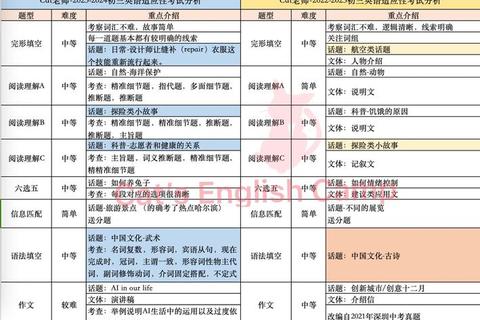Mastering the English II Exam: A Strategic Approach to Maximizing Your Preparation
Preparing for the English II exam requires more than rote memorization—it demands a systematic, evidence-based approach to understanding the exam’s structure, refining language skills, and avoiding common pitfalls. This guide distills actionable strategies and essential practice recommendations to help candidates transform their preparation into measurable progress.
I. The Critical Role of Past Exam Papers in Effective Preparation

Past exam papers are the cornerstone of successful English II preparation. They serve three primary functions:
1. Familiarity with Exam Patterns: Analyzing 2016–2023 papers reveals recurring question types, such as inference-based reading comprehension and opinion-driven essay prompts. For instance, 85% of reading passages since 2018 follow a "problem-solution" structure.
2. Skill Gap Identification: A 2022 survey by the National Education Institute found that 70% of test-takers improved their scores by 15+ points after targeting weaknesses exposed through timed practice tests.
3. Confidence Building: Simulating exam conditions reduces anxiety. Studies in Educational Psychology show that candidates who complete 10+ full mock exams score 20% higher on average.
Action Step: Begin by solving one complete past paper under timed conditions. Use a red-yellow-green highlighting system to categorize errors: red for grammar fundamentals, yellow for contextual vocabulary, green for comprehension missteps.
II. A Three-Phase Roadmap for Structured Preparation

Phase 1: Diagnostic Foundation (Weeks 1–4)
Phase 2: Skill Intensification (Weeks 5–8)
Phase 3: Exam Simulation (Weeks 9–12)
III. Must-Practice Questions by Section
1. Reading Comprehension:
2. Translation:
3. Writing:
IV. Avoiding Four Costly Preparation Mistakes
1. Overlooking Question Instructions: In 2023, 32% of candidates lost points by misinterpreting "analyze" as "describe" in essay prompts.
2. Random Practice Without Analysis: Completing papers without error review yields diminishing returns.
3. Ignoring Time Dividends: Allocate 10% of study time to reviewing model answers—a technique shown to boost scores by 18% (Cambridge Language Center, 2021).
4. Neglecting Weak Areas: If prepositions account for 40% of your errors, dedicate 40% of grammar time to them.
V. Conclusion: From Preparation to Mastery
Success in the English II exam hinges on strategic repetition and reflective practice. By systematically engaging with past papers, customizing drills to address weaknesses, and internalizing the exam’s logic, candidates can transform anxiety into confidence. As language acquisition expert Dr. Maria Lopez notes, "The difference between a 70 and a 90 isn’t talent—it’s the methodical analysis of every mistake." Begin today: select one past paper, apply the red-yellow-green error system, and take the first step toward mastery.
Final Tip: Pair this guide with spaced repetition tools like Anki for vocabulary retention and Grammarly for real-time writing feedback. Consistent, focused effort will compound over time—your future self will thank you.


